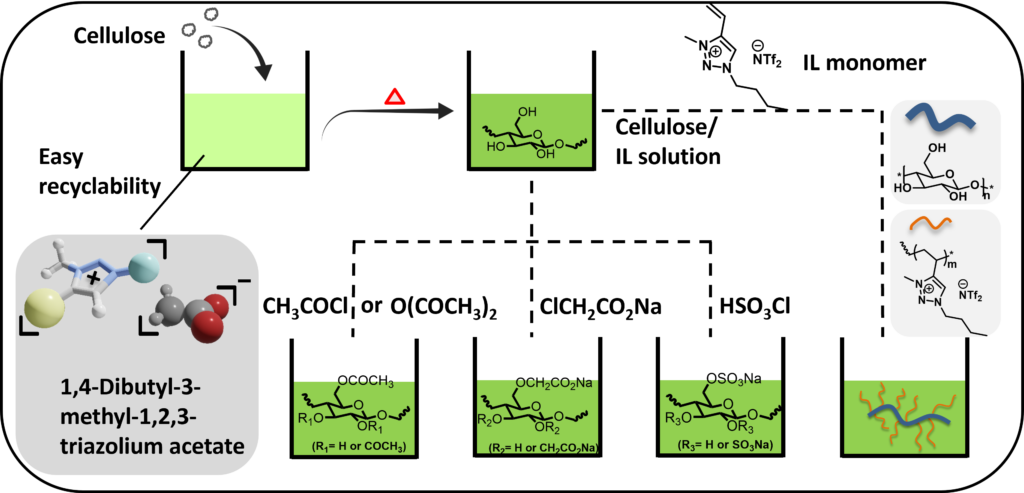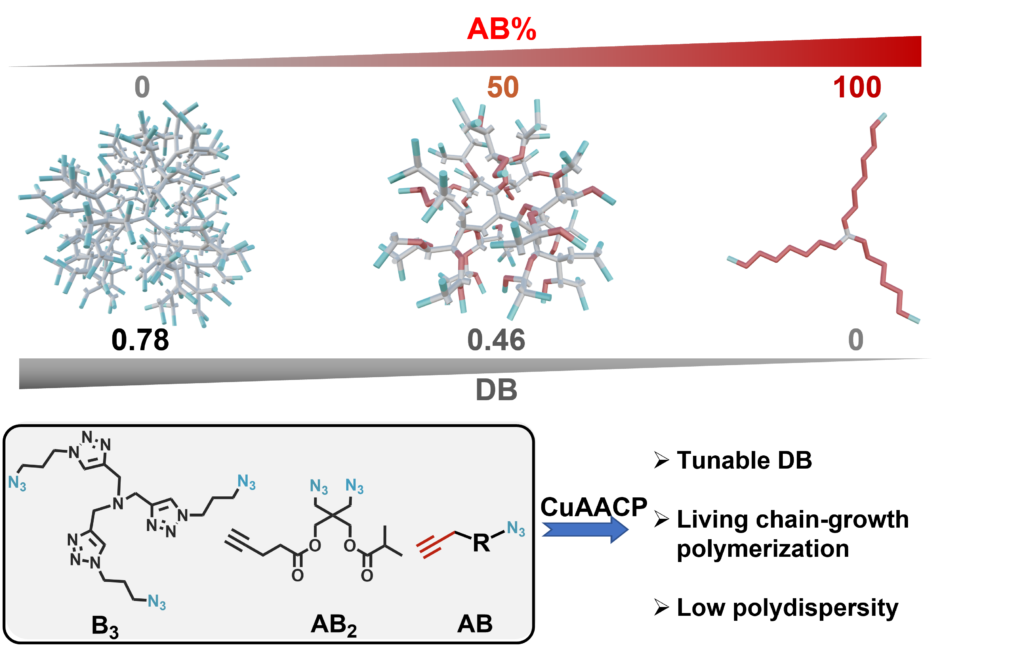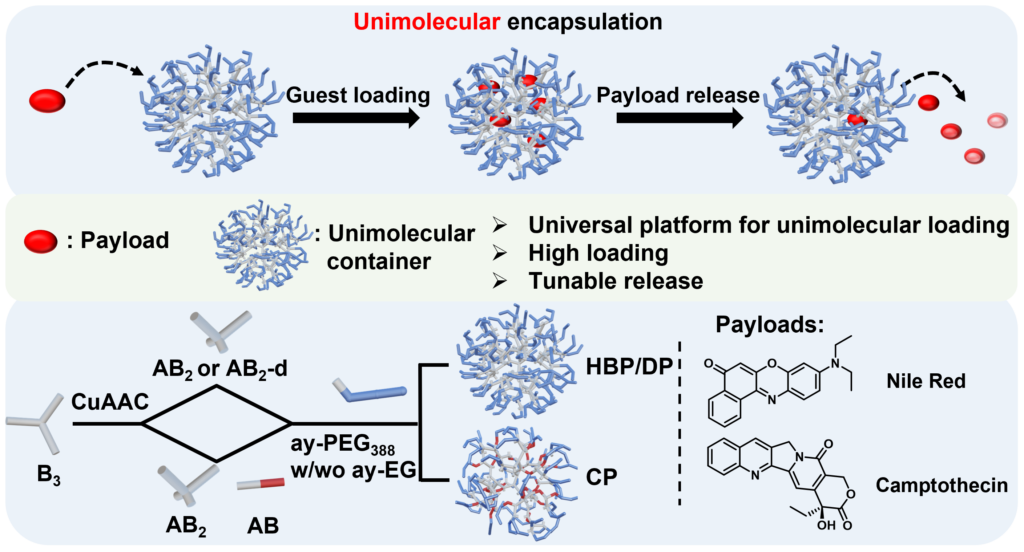Kangling’s PhD research focused on the synthesis and application of the polymers with copper-catalyzed azide-alkyne cycloaddition (CuAAC) chemistry involved in the polymer sidechain or backbone.
CuAAC-Side chain engineering: 1,2,3-Triazolium ionic liquids were synthesized via CuAAC click reactions and their application in cellulose dissolution and cellulose-synthetic polymer materials construction were investigated (Project 1).
CuAAC-Main chain construction: The synthesis, polymerization mechanism (Project 2) and application (Project 3) of (hyper)branched polytriazoles as unimolecular nanocontainers for drug delivery and bioimaging were explored.
Project 1. Dissolution and Functionalization of Celluloses Using 1,2,3-Triazolium Ionic Liquid

Ionic liquids (ILs) are organic salts that have melting points below 100 oC and represent an intriguing class of “green” solvents for cellulose dissolution and processing in a sustainable manner.In this study, we reported a new type of 1,3,4-trisubstituted 1,2,3-triazolium (TTr) ILs that demonstrated facile synthesis, high solubility of celluloses, and high chemical stability in alkaline environment. Among them, 1,4-dibutyl-3-methyl-1,2,3-triazolium acetate IL exhibited the highest cellulose solubility at about 15.7 wt% at 80 oC. The cellulose-dissolved solutions were applied for subsequent cellulose functionalization reactions, including cellulose acetylation, sulfonation and carboxymethylation with high conversions. In addition, a polymerizable TTr IL carrying a C4-vinyl group was used for the first time to prepare hybrid celluloses with grafted polytriazoliums. These results demonstrated TTr ILs as alternative solvents for cellulose dissolution and functionalization and a new approach was developed to obtain cellulose-synthetic polymer materials.
Project 2. Synthesis of Hyperbranched Polymers with Freely Tuned Branching Density by a Living Chain-Growth Click Polymerization

Precise control of degree of branching (DB) is one of the primary limits in traditional hyperbranched polymer synthesis. In this study, we reported the first one‐pot chain‐growth copolymerization of AB2 and AB monomers via CuAAC chemistry and obtained branched copolymers with low dispersity and freely tuned DB ranging from 0-0.78. A variety of difunctional AB monomers with different linkers were designed for CuAAC copolymerization with a trifunctional AB2 monomer to produce a series of branched copolymers with tunable compositions and low dispersity. Kinetics study and chain-extension experiments confirmed the features of chain-growth mechanism and living polymerization. Meanwhile, Nile Red encapsulation experiments indicated that branched polymers with lower DB showed higher loading capacity than hyperbranched polymers from homopolymerization of AB2, demonstrating the dependence of payload encapsulation efficiency on polymer structure compactness. This exploration expanded our toolbox to tune the compositions and structures of (hyper)branched polymers for their potential application as unimolecular nanocontainers.
Project 3. Unimolecular Encapsulation of Functional Payloads into Hyperbranched Polytriazole Nanoparticles

Nanostructured organic materials applied in payload delivery, including self-assembled polymers and lipid-based particles, are inherently suffering from modest-controllability of uniformity and unexpected disassembly. These limitations can be overcome by using unimolecular nanocontainers as these macromolecular nanostructures are stable in solvent and solid states, benefiting from the covalently bonded core-shell structure. In this study, we reported (hyper)branched polytriazole-based unimolecular containers with various sizes, degrees of branching (DB) and functionalities obtained from a one-pot CuAAC reaction and studied the structural property influences on the payloads’ encapsulation efficiency and release mechanism. The dependency of the encapsulation performance of Nile Red on the size of unimolecular containers was demonstrated, in which high loading content and efficiency was achieved by using unimolecular containers with lower DB, and the introduction of functionality provided distinct release mechanism. We expect these explorations will provide a versatile platform of unimolecular containers for suitable payloads in applications including drug delivery and bio-imaging.